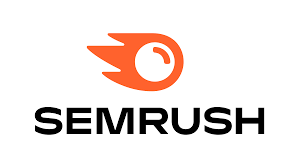Contents
In the age of instant gratification, e-commerce stands as the crowning jewel of modern-day innovation. Gone are the days of elbowing through crowded marketplaces or hunting aisle by aisle for a single product.
Today, the world’s most diverse storefronts are just a click away, accessible right from the comfort of your couch.
From the rarest antiques to the trendiest gadgets, e-commerce is reshaping the way we shop, ensuring that every need, whim, or desire is just a tap or swipe away.
E-commerce Growth in Recent Years
E-commerce has witnessed a remarkable surge in recent years, primarily driven by advancements in technology, changing consumer habits, and the global impact of the COVID-19 pandemic.
The convenience of online shopping, combined with vast product variety and competitive prices, has attracted an increasing number of consumers to digital platforms.
This shift was further amplified by innovations in logistics and the potential for businesses to tap into global markets.
Why SEO Is Necessary for E-commerce in 2024.
As of 2024, SEO (Search Engine Optimization) remains crucial for e-commerce businesses for a variety of reasons. Even with the rapid evolution of technology and changes in online consumer behavior, many of the fundamental reasons why SEO is essential for e-commerce remain valid.
Organic Search as a Primary Traffic Source: Organic search remains a dominant source of website traffic. Ensuring your e-commerce site ranks well for relevant keywords means potential customers can find you easily when searching for products you offer.
User Trust and Credibility: High rankings in search results often equate to increased trustworthiness in the eyes of consumers. A top position reinforces your brand’s credibility and authority.
Cost-Effective Marketing: SEO targets users actively searching for products, making it more cost-effective in the long run compared to other marketing methods like Pay-Per-Click (PPC).
Enhanced User Experience: Good SEO practices often overlap with user experience optimizations. Google values user experience as a ranking factor, so a well-optimized site benefits both your rankings and your users.
Staying Ahead of Competitors: The e-commerce space is intensely competitive. Proper SEO ensures you remain visible and competitive, helping you capture a larger share of the market.
The Basics of E-commerce SEO in 2023
Chapter 1. On-page optimization essentials:
The Keyword Conundrum: Beyond the obvious, there’s a need to tap into latent needs and desires. Long-tail keywords, those longer and more specific phrases, can attract highly targeted traffic, which often translates to higher conversions.
Crafting Irresistible Descriptions: Think of product descriptions as a blend of art and science. Anecdotes, stories, and immersive descriptions can give life to even the most mundane products.
The Meta Magic: With limited characters at your disposal, every word in your title and meta description should be deliberate, designed to intrigue and inform simultaneously.
URLs – An Organized Showcase: A coherent URL structure, categorized efficiently, not only aids search engines but also helps potential customers intuitively navigate your offerings.
Chapter 2. Technical SEO necessities:
Mobile Optimization and Core Web Vitals: With more users shopping on mobile devices, responsive design isn’t an option; it’s a must. Google’s Core Web Vitals measure the health of your site regarding loading performance, interactivity, and visual stability.
Schema Markup: Using structured data helps search engines display rich snippets like price, availability, and review ratings in search results.
Site Speed and Performance: A faster website not only improves user experience but also ranks higher. Tools like GTmetrix or Google’s PageSpeed Insights can offer actionable insights.
HTTPS and Secure Browsing: Security is a ranking factor. Ensure your site uses HTTPS to protect user data and build trust.
Chapter 3. The Rise of Voice Search and Visual Search
Chatting Up Your Store: As voice-activated assistants like Alexa and Siri become household staples, optimizing for voice means thinking in terms of natural conversation.
The Visual Hunt: High-resolution images are just the start. Incorporate 360-degree product views or even augmented reality experiences, then optimize these elements for search.
Chapter 5. User Experience (UX) as an SEO Factor
The Silent Persuader: UX influences buying decisions silently. From color psychology to strategic CTA (Call to Action) placement, every element can make or break the sale.
Mobile-First, Always: With mobile searches eclipsing desktop, ensure your website’s mobile experience is seamless, fast, and, most importantly, intuitive.
Chapter 6. E-commerce Content Strategy
Dynamic Blogging: Your blog shouldn’t just sell; it should educate, entertain, and inspire. Think tutorials, customer stories, behind-the-scenes glimpses, and industry insights.
Interactive Endeavors: Interactive content, be it quizzes that lead to product recommendations or engaging video demonstrations, can significantly amplify engagement and shareability.
Chapter 7. Backlink Building for E-commerce Sites
Building Trust Through Links: It’s akin to having reputable figures vouch for you in the digital realm.
Community Engagement: Participate in forums, comment on relevant blogs, and be present where your potential customers hang out. Not for blatant promotion, but to offer value, which can naturally lead to backlinks.
Chapter 8. International E-commerce SEO
Beyond Language – The Cultural Palette: For instance, the color red symbolizes luck in China but can denote danger in Western cultures. Such nuances should be reflected in your site design and content for different regions.
Chapter 9. The Role of AI and Machine Learning in E-commerce SEO
Chatbots – The 24/7 Sales Assistants: They never sleep, never tire, and can handle multiple customers simultaneously, guiding them, solving queries, and even upselling when appropriate.
Adaptive Content Delivery: Based on user behavior, browsing history, and other data points, AI can dynamically alter the content a user sees, ensuring maximum relevance.
Chapter 10. Measuring and Analyzing E-commerce SEO Success
It’s not enough to implement strategies; one must also measure their effectiveness. Key performance indicators (KPIs), such as organic traffic, conversion rate, and average order value, offer insights.
Leverage platforms like Google Analytics and SEMrush to track your SEO performance. Regularly assess and tweak your strategies based on these insights.
Quick Links
- Jungle Scout Review: Can It Really Boost FBA Sales?
- Importify Review: Is This Dropshipping Platform Worth it?
3 Best Ecommerce SEO Tools
SEMrush
SEMrush is a comprehensive SEO toolkit that provides various features beyond just e-commerce SEO. It offers keyword research, site audits, backlink analysis, competitor research, and more.
Features:
- Keyword Research: Get insights into what keywords competitors rank for and discover new keyword opportunities.
- Site Audit: Analyze your site for SEO issues and receive recommendations on how to fix them.
- Backlink Analysis: Examine the quality and quantity of your backlinks and those of competitors.
- Traffic Analytics: Gain insights into a website’s traffic sources, regional distribution, and user behavior.
- Competitor Analysis: Compare your e-commerce website against competitors and identify gaps.
- Position Tracking: Monitor your rankings in the SERPs over time for specific keywords.
Why It’s Useful: SEMrush provides an all-in-one platform for e-commerce websites to maintain and improve their SEO. From understanding competitors’ strategies to optimizing on-page elements and tracking changes, it offers a holistic SEO solution.
Ahrefs
Similar to SEMrush, Ahrefs is a complete SEO toolset with a strong emphasis on backlink analysis.
Features:
- Site Explorer: Analyze any website’s backlinks and organic search traffic.
- Keywords Explorer: Discover keyword ideas, see their search volume, and estimate their ranking difficulty.
- Content Explorer: Find popular content in your industry based on social shares, organic traffic, and backlinks.
- Rank Tracker: Monitor keyword rankings over time.
- Site Audit: Diagnose SEO issues on your e-commerce website.
Why It’s Useful: Ahrefs is renowned for its robust backlink database and intuitive interface. For e-commerce businesses, it’s crucial to understand the link profile of competitors and to find content gaps. Ahrefs’ tools can help in understanding these aspects and crafting effective SEO strategies.
Screaming Frog SEO Spider
Screaming Frog SEO Spider is a highly popular desktop-based website crawler, designed for SEO professionals. It allows users to quickly crawl websites (both small and large) to gather critical data and analyze various SEO elements like URLs, status codes, title tags, meta descriptions, response times, and more.
Features:
- Crawl Analysis: Analyze your website’s structure and discover SEO issues, such as broken links, duplicate content, and redirect chains.
- Meta Data & Content Review: Extract metadata and content for review and optimization.
- Visualization: Understand your website’s architecture with visualizations of URL structures.
- Integration with Google Analytics & Search Console: Combine crawl data with user metrics and search analytics.
Why It’s Useful: Screaming Frog is primarily a website crawler. For e-commerce businesses, it’s essential to ensure that all product pages are optimized, that there are no broken links or missing meta descriptions, and to spot potential issues like thin content or duplicate pages. The tool provides an in-depth analysis that can help e-commerce websites address technical SEO issues.
Top 10 E-commerce SEO Mistakes You Should Avoid
Ignoring Keyword Research
Neglecting to research and target relevant keywords means missing out on potential traffic, leading to reduced visibility for products. Understanding your audience’s search intent and aligning it with your product listings is crucial.
Duplicate Content
Using the same product descriptions across multiple listings can result in search engine penalties due to duplicated content. Unique content not only aids in SEO but also gives your site a distinct voice.
Lacking Product Descriptions
Product pages with sparse content struggle to rank. Unique, detailed descriptions improve SEO and user experience. A well-crafted description can also be the deciding factor in a purchase decision.
Not Optimizing Product Images
Missing alt tags, using non-descriptive filenames, or failing to compress images can negatively impact SEO and site performance. Images play a vital role in e-commerce, making their optimization crucial for both search engines and users.
Ignoring Mobile Optimization
With the prevalence of mobile shopping, a non-mobile-friendly site can negatively affect rankings and user experience. Mobile optimization ensures you cater to a broader audience and meet modern browsing habits.
Poor Site Structure
An illogical or convoluted site structure can hinder search engines from efficiently crawling and indexing pages, leading to potential ranking issues. A clear and intuitive structure enhances user navigation and improves the overall shopping experience.
Failing to Use HTTPS
Not securing your e-commerce site with HTTPS can affect customer trust and negatively influence Google rankings. HTTPS ensures data security, making customers more comfortable with online transactions.
Not Fixing Broken Links
Broken links, leading to 404 errors, can degrade the user experience and harm the site’s SEO. Regular site audits to detect and fix these issues ensure a seamless browsing experience.
Inadequate Pagination or Canonical Tag Use
Incorrect handling of pagination can create duplicate content. Not using canonical tags can confuse search engines about which page version to prioritize. Effective handling of these elements ensures search engines index the most relevant pages and avoid content dilution.
Slow Loading Speed
Slow site performance can decrease rankings and turn away potential customers due to impatience. In a fast-paced digital world, speed is of the essence, and optimizing site performance can significantly enhance user retention.
5 Best Advanced E-commerce SEO tips
Structured Data Markup (Schema Markup)
Schema markup is a structured data format that provides search engines with additional context about your content.
By implementing it on your e-commerce site, you make it easier for search engines to understand and display your content in richer ways.
For example, if you’re selling products, schema markup can highlight product details, prices, and reviews in search results, potentially increasing click-through rates.
User-Generated Content
Encouraging customers to leave reviews and ratings for your products is essential for e-commerce SEO.
Not only does this build trust with potential buyers, but it also provides fresh, user-generated content that can improve your site’s visibility in search results.
Google values recent and authentic user-generated content.
Internal Linking
A well-structured internal linking strategy helps both users and search engines navigate your website effectively.
By linking related product pages, category pages, and other relevant content, you create logical pathways through your site, which can enhance SEO.
It also helps distribute the authority and ranking power across your site.
Category Page Optimization
Category pages are crucial for e-commerce SEO because they often rank for broader, high-traffic keywords.
Optimizing these pages involves ensuring they’re keyword-rich, have clear navigation to individual product pages, and contain unique category descriptions.
This helps search engines understand the content and purpose of these pages better.
Secure Your Website with HTTPS
The security of your website is a ranking factor. Google gives preference to websites using HTTPS, which encrypts data transmitted between the user’s browser and your server.
This not only enhances security but also builds trust with visitors, which can indirectly impact your search rankings.
Mobile-First Optimization
Google prioritizes mobile-first indexing, so ensure your e-commerce site is mobile-friendly.
Optimize your website’s design for mobile users, improve page load times, and make navigation seamless on smartphones and tablets.
Mobile optimization not only boosts SEO but also enhances the user experience, which can lead to higher conversion rates.
Implementing these advanced e-commerce SEO strategies can help you improve your website’s visibility in search results, drive more organic traffic, and ultimately increase sales.
However, remember that SEO is a continuous process, and it’s important to stay updated with industry trends and algorithm changes to maintain and improve your rankings over time.
Quick links
- SyncSpider Review: Is It The Best eCommerce Integration Tool?
- Teikametrics Review: Can it Grow eCommerce Business? (TRUTH)
Final Say
Over the past seven years of diving deep into the e-commerce SEO world, I’ve learned a thing or two. And trust me, it’s been quite the journey! No two days are the same; what worked yesterday might be old news today.
From the late-night keyword hunts to untangling the web of technical glitches, I’ve seen the highs and the lows.
If there’s one piece of advice I’d love to share, it’s this: always keep your ear to the ground and your eyes on the horizon.
SEO isn’t just about algorithms or rankings; it’s about understanding real people, their needs, and their online behaviors.
So, whether you’re just starting or are knee-deep in the e-commerce game, remember: to stay curious, be patient, and never stop learning.
Because, in this ever-shifting SEO landscape, the journey, with all its twists and turns, is where the real magic happens.
FAQs
To use SEO for e-commerce, conduct keyword research, optimize product pages with keywords, ensure technical SEO health, create quality content, and build backlinks. Prioritize user experience and adapt to algorithm changes for long-term success.
E-commerce SEO focuses on optimizing online stores to boost visibility in search engines. It involves keyword research, on-page optimization of product listings, and technical improvements like site speed and mobile-friendliness. The goal is to attract organic traffic, increase sales, and enhance the user experience for online shoppers.
Does SEO require coding?
Basic HTML knowledge is helpful in SEO for on-page optimization and understanding technical issues. While coding skills can be advantageous, many SEO tasks can be performed using tools and content management systems.
Yes, SEO is essential for e-commerce. It boosts online store visibility, drives organic traffic, and increases sales. Optimizing product listings, improving user experience, and using effective keywords are vital for e-commerce success.














